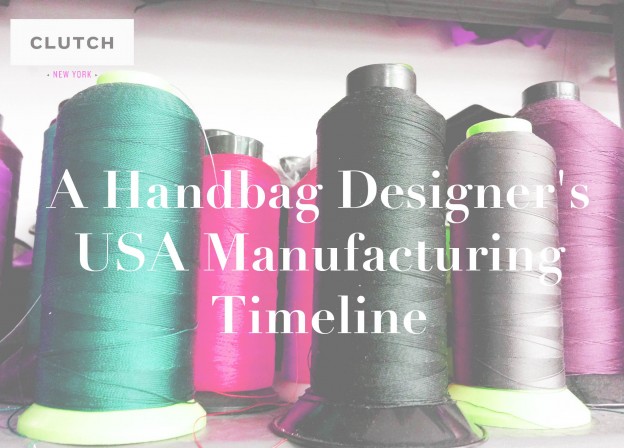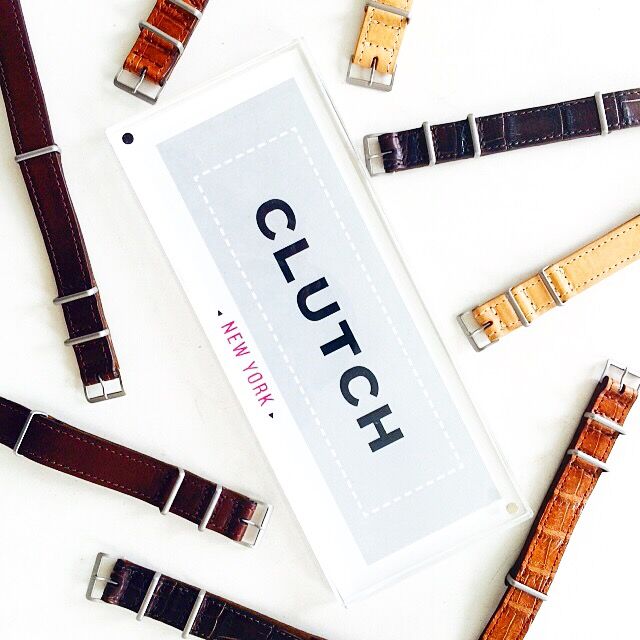Scenario: Let’s begin by assuming you are a handbag design and are in need of a “handbag designer’s USA manufacturing timeline.” You are manufacturing from a good sample that is properly sourced with readily available raw materials. All you have to do is manufacture, right? Let’s leave steps 1 and 2 for another post and jump right into manufacturing!
The “how many and when?” question is at the heart of the manufacturing process. After working for seasoned clients, with years of productions under their belt, I’ve learned it’s really about “Just In Time “ logistics. The idea that you can deliver your product to the consumer “just in time” before you have to pay for it is really the best way to structure the inventory supply for your business. This strategy does require some experience and an ability to predict demand. Keep in mind that it can be less expensive to make a product at certain times of the year due to factories’ seasonal demands.
Now that you have a saucy mix of decisions, here are some of the more basic considerations. Let’s use handbag manufacturing as an example:
1. Make sure your factory has reviewed your sample and given you a written quote on production and delivery time frames.
Have all materials on hand at the factory on the agreed upon start date. It’s easy to over look that last piece of hardware but don’t do it! When you have a missing piece of hardware discovered at the last minute and your lead time for getting it from Italy or China is 3 weeks you now have lost your spot in the factory’s production schedule; not to mention you have a very unhappy factory who is a lot less likely to give you a good quote the next time they see you walk in the door.
2. You can’t manage what you don’t measure! Inspect factory work at key times in the process.
Does the handbag have the lining sewn in properly just like your sample? If the lining is not being done correctly you have to catch that before they put the rest of the bag together or you have to rip it apart to fix it. This can put you at risk having to purchase more raw materials in the process which changes overall costs and timeframes. Your acceptance and final payment upon delivery from the factory is binding, so be sure the product conforms to the agreed upon sample or you’re on the hook!
3. Deliver your finished product to the client.
It should be packaged, insured, and shipped in an agreed upon fashion. C.O.D. being the watchword for all but your most trusted clients. Make sure you know when your client really needs to receive the product and ensure you under promise and over deliver. You don’t want product that needs to be received for a trunk show or Holiday event showing up late. You won’t get a lot of repeat orders that way. The key to profitable manufacturing is repeat business.
For new brands and aspiring entrepreneurs wanting to test out a new product, the considerations are different. Here I always recommend much more extensive product development and market testing as well as small batch manufacturing. We work with startups on branding and a proper online presence, as consumers want to see the brand’s “story” and message online.
It is exciting to see new ideas come to market. As a Made in USA manufacturer, I am proud to be part of a new wave of American designers bringing back manufacturing to the USA. Made in USA really does mean quality. We hope all the aspiring entrepreneurs out there are able to make the dream of quality Made in USA products a reality.
Laura Dotolo is the Principal of Clutch Made (www.clutchmade.com) based in Manhattan’s garment district. Ms. Dotolo is a Manhattan factory owner as well as a long time designer and stylist for the world’s finest brands. Laura helps brands large and small develop, sample and manufacture accessories in the USA.

